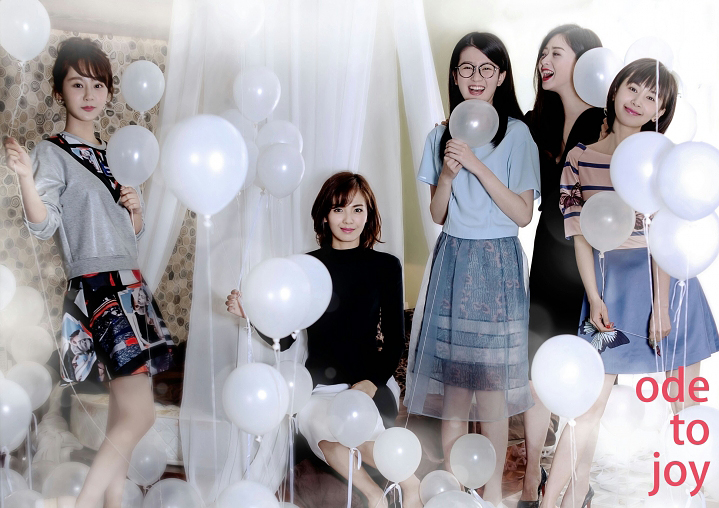New series reflects growing appeal of realism among youth

The five main characters of the TV series Ode to Joy
The television production team led by Hou Hongliang, producer of such hit shows as The Disguiser and Nirvana in Fire, has once again captivated Chinese audiences with its latest series Ode to Joy. But unlike the previous two, which were period pieces, Ode to Joy is about contemporary urban life.
Ode to Joy’s dedication to realism is often cited as one of the reasons for its popularity. It depicts the hardship that lurks behind seemingly idyllic urban lifestyles while acknowledging the existence of widening social gaps.
Ethos of the times
Another TV series that portrayed the urban lifestyle of the younger generation was Struggle directed by Zhao Baogang about 10 years ago. The main character Lu Tao’s love story and career path embody a romantic perspective.
In the series, a group of young people lives in a loft with the word “Utopia” inscribed on the doorway—this is indeed a dream of Utopia. Some of them earnestly aspire to become famous architects and costume designers, believing that success can be achieved through hard work and that freedom can be realized in spite of the rules imposed by society.
As a landmark work, Struggle symbolizes the end of an era rather than the beginning of one. What culminates in an idealistic way is the passion and ardor felt by members of the post-1950s generation, like Zhao.
The idealism of Struggle can be contrasted with the grim realism of Dwelling Narrowness, Naked Marriage and Beijing Love Story, which document social change and the development of mass culture.
In the past 10 years, the ethos of the times seems to have undergone a transition. As the struggle for existence replaces the pursuit of ideals, a common temperament of rationality and sober thinking is taking shape among youth. Hou, of the post-1970s generation, is apparently more realistic than Zhao.
In a time when consumerism prevails, everything can be converted into cash and purchasing power, which seems callous but largely simplifies the gap between different social strata.
Especially in modern society, when many commercial brands own a comprehensive industrial chain, globally renowned luxury brands also sell inexpensive handbags, makeup and clothing that people with moderate incomes can afford.
This will result in the illusion and misconception that as long as a relatively substantial amount of money is earned, people can move freely between social classes. It seems that those with a monthly income of 10,000 RMB and those with an income of hundreds of thousands of RMB do not differ much from each other in terms of the personal image projected in social activities. Many of them wear clothing from famous brands, and though some may wear only clothing from luxury brands’ most affordable lines, others drape themselves inlimited editions.
In a society where most people can afford basic clothing and food to meet their needs, the gap between social classes has shrunk somewhat in terms of material resources within the context of expanding consumerism.
Seeking social identity
But in other ways, the rift between the social classes is widening and deepening.
While the middle class is growing and imitating the social norms of the affluent, they are positioned between poverty and wealth, leaving them largely disenfranchised. This is what makes the middle class anxious.
In 2014, China’s National Bureau of Statistics officially defined the Chinese middle class for the first time as households—assumed to consist of three members—with an annual income ranging from 60,000 to 500,000 yuan. According to this definition, at least three characters in the Ode to Joy would qualify as typical members of the middle class. They represent the lifestyles of most young people in cities.
But if the middle class can only imitate the social norms of the affluent class, then their life may be comfortable but definitely not decent.
Ode to Joy attempts to convey not only that young people with different backgrounds try to keep a foothold in Shanghai but also that they are striving to create a new spiritual homeland by resisting against the obstacles from conventional society and pressure from the affluent class. It is in such a gap that they tenaciously seek the good life and explore their own social identities as well as personal discourse.
